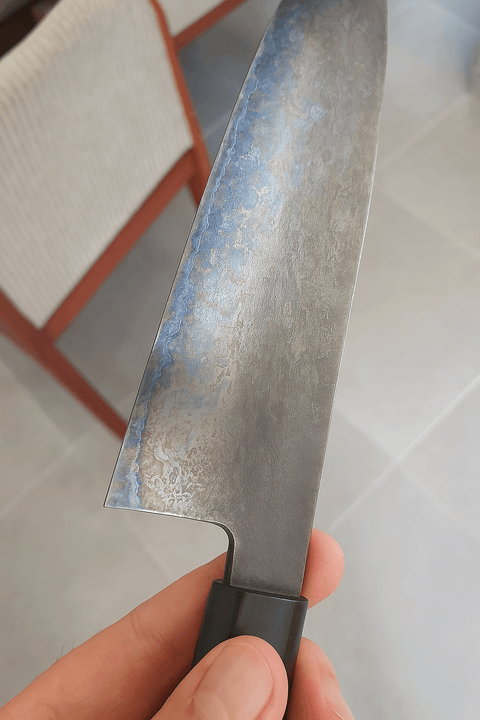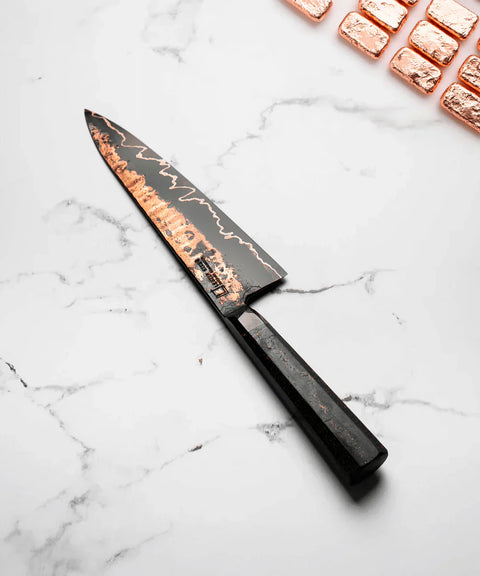
What is patina on a Japanese knife and why can it be good ?
1. What is patina and why does it appear?
Patina is a thin layer of oxidation that appears naturally on carbon steel blades , such as Aogami or Shirogami . Unlike rust ( which damages ) , patina protects the steel . from further oxidation , acting as a barrier that stabilizes the surface. It appears with use , especially if you cut acidic foods like tomatoes, onions , or citrus fruits.
🔎 Fun fact : The patina usually begins as a golden color , turning blue, purple , and finally dark gray .
2. Is patina good or bad ?
Many hobbyists are concerned when they see their knife " tarnish ," but patina is not dirt or deterioration : it is a sign that the steel is reacting as it should .
✔️ The good: It protects against corrosion , gives the knife character , and is completely natural.
✖️ The bad: if you don't clean the blade well , rust ( brown or red) may appear , which is harmful and should be removed .
3. Which knives develop patina?
Mainly Japanese carbon steel knives , such as :
- Shirogami ( White Steel ): Very pure, sensitive, develops patina quickly.
- Aogami ( Blue Steel ): Somewhat more resistant, it contains a little chromium .
- SKS93 / SUJ2: Also carbonaceous, with different sensitivity.
Stainless steel or " powder steel " does not develop patina or does so minimally .

4. Can I speed up the formation of patina?
Yes. Some chefs apply a " forced patina " to protect their blade from day one . How?
🥄 With coffee: Dip the leaf in cold coffee ( without touching the handle) and let it sit for a few hours.
🟡 With mustard: Apply mustard ( preferably with vinegar) with a cotton swab .
🥑 With food: onion, avocado or even mayonnaise help create unique patterns .
5. How to care for a patinated knife
Once your knife has developed patina, here are the key care steps :
- Always clean by hand, with warm water and without harsh soap .
- Dry immediately after use .
- Apply a drop of maintenance oil if you are not going to use it for a few days.
- Store it wrapped in paper or a bag that does n't retain moisture.
🧽 Does rust appear ? Use a soft abrasive sponge or a special knife eraser . Avoid sandpaper , which can damage the Damascus pattern or the Kuro- Uchi finish .
Closing and tips
Understanding patina is key to appreciating a good Japanese carbon steel knife . Far from being a flaw , it's part of the blade 's soul . Each patina tells a story : yours , your ingredients, your recipes.
💡 Do you have a knife with patina? Share it with us on social media using the hashtag #MyJapaneseKnife and visit our page to see all the top Japanese knives on the market.








